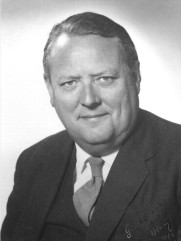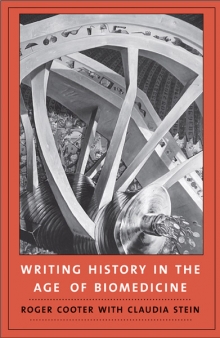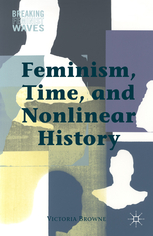 I’ve spent the past few days flicking through Dagmar Herzog’s excellent Cold War Freud, and there is one section that particularly sticks out for me. It deals with the period between the 1960s and 1980s, on the relationship between psychiatric studies of Holocaust survivors and later research on Vietnam veterans (the latter would lead to the codification of post-traumatic stress disorder – PTSD – in DSM-III in 1980).
I’ve spent the past few days flicking through Dagmar Herzog’s excellent Cold War Freud, and there is one section that particularly sticks out for me. It deals with the period between the 1960s and 1980s, on the relationship between psychiatric studies of Holocaust survivors and later research on Vietnam veterans (the latter would lead to the codification of post-traumatic stress disorder – PTSD – in DSM-III in 1980).
Herzog’s argument is that the focus on Vietnam and PTSD by historians has overlooked the role that the research on Holocaust survivors played in shaping later medical theories of trauma, especially PTSD. Moreover, Herzog draws attention to the effect that the Holocaust research had on psychiatrists in the 1970s and 1980s, who were then treating refugees, many of whom, the psychiatrists claimed, were suffering from PTSD-like symptoms as a consequence of their exposure to rape, genocide and torture. According to Herzog, one group of psychiatrists, led by J. David Kinzie, in an effort to deduce whether a Western concept like PTSD could be applied to non-Western populations, began experimenting with their application of the diagnosis, and, in so doing, revisited and were influenced by earlier work on ‘concentration camp syndrome’ and related disorders.[1]
Herzog’s point about the retroactive reading of the Holocaust literature is somewhat under-determined (and buried in her end-notes). But what particularly interests me is both the effect of the Holocaust research on what came afterwards, and of the re-reading that Kinzie’s team undertook in the late 1980s to understand the traumatic experiences that they were now documenting in refugees, a re-reading that was inspired by the codification of PTSD in 1980: for it remains my hypothesis, necessarily tentative, that the history of trauma could be profitably rethought as doubled or folded – that is, that psychiatric research on trauma both shaped the research that followed, just as this later research folded back, shaped or inflected what came before. For this reason, I am interested in how certain medical studies endure, in how they stick – how they have an effect on later medical knowledge, and/or how they are re-animated, as in Kinzie’s case, by physicians looking back to comprehend what’s in front of them.
How this maps onto my own research on the history of trauma can be illustrated with reference to the work of neurologist Henry Miller (b. 1913; d. 1976. Pictured right). He remained one of the most influential and heavily-cited contributor to debates over traumatic sequelae in postwar Britain, shaping much of the research that was published from the mid-1960s onwards. This legacy, I want to show, stems both from the effect of Miller on later studies (colouring, conditioning, shaping them); but also from the effect of these later studies on Miller’s earlier work, as it was read anew, re-animated and re-signified by the research that followed the mid-1960s. In brief, I think of Miller’s lectures as folded or sticky events, as simultaneously cause and consequence of a new way of studying traumatic sequelae.
Henry Miller (b. 1913; d. 1976. Pictured right). He remained one of the most influential and heavily-cited contributor to debates over traumatic sequelae in postwar Britain, shaping much of the research that was published from the mid-1960s onwards. This legacy, I want to show, stems both from the effect of Miller on later studies (colouring, conditioning, shaping them); but also from the effect of these later studies on Miller’s earlier work, as it was read anew, re-animated and re-signified by the research that followed the mid-1960s. In brief, I think of Miller’s lectures as folded or sticky events, as simultaneously cause and consequence of a new way of studying traumatic sequelae.
Miller ’s influence stemmed from two lectures he gave to the Royal College of Physicians of London in 1961, which were later published in the British Medical Journal two months later.[2] Their focus was the disorder ‘accident neurosis’ – a label that Miller applied to a collection of symptoms that followed a traumatic accident but which bore an inconstant relationship to the severity of that accident. The typical case of accident neurosis was a working-class, 40-something man, who was involved in a minor accident (either on the road or at work) that resulted in modest, trivial physical injuries, typically to the head; the patient nevertheless presented with long-lasting psychiatric or concussional symptoms – headaches, dizziness, depression, anxiety, intolerance to noise, inability to focus, loss of appetite, etc. Because there was no consistent relationship between the severity of an injury and the consequent psychiatric symptoms – indeed, the more severe accidents rarely resulted in long-lasting emotional problems – Miller concluded that the neurotic sequelae of accidents stemmed from the systems of compensation and insurance that had grown alongside the Welfare State: that is, patients, whether deliberately or unconsciously, exaggerated or magnified their otherwise trivial symptoms so as to secure a larger compensation settlement.
What was novel about Miller is that, in his ‘accident neurosis’ lectures, he reported on follow-up studies with 50 former patients of his whom he had re-examined after they had left the medico-legal process. Furthermore, Miller’s lectures made deliberate use of statistics to avoid what he identified as the limitations of earlier research, for his complaint was that there had been few substantive studies published of ‘accident neurosis’, with most taking the form of ‘occasional contributions, often more conspicuous as expressions of opinion than for their factual content.’[3] These statistics substantiated Miller’s hypothesis that neurotic sequelae bore no relation to the severity of the trauma: for example, of the 50 patients whom Miller had followed-up with post-settlement, only two had psychiatric problems disabling them from work (three had psychiatric disorders but still worked). Indeed, 41 out of 45 of those who had been employed prior to their accident had returned to work by the time of Miller’s follow-up, with 45 out of the 50 symptom-free (they could only ‘muster […] a few trivial residual symptoms’, Miller noted, like nervousness in traffic).[4]
Granted, Miller placed greater stress on deliberate malingering than his contemporaries did. Otherwise, however, his ‘accident neurosis’ research sat comfortably within the medical consensus over neurotics and their claims for compensation. Indeed, immediately following their publication, Miller’s lectures were praised in an editorial in The Times, and welcomed, albeit more cautiously, by an editorial in The Lancet.
Yet, in the decade after 1965, the consensus began to shift. Neurologists and psychiatrists began to hold that concussive sequelae were causally related to brain damage, even if the patient’s psychology may elaborate the symptoms. Miller’s lectures were therefore seen as passé. That they nevertheless held considerable sway within the legal profession (it was claimed that they were regularly cited in court) was much to the chagrin of doctors. This incited many of the medical studies published in the 1970s, which attempted to expose the logical inconsistencies in Miller’s lectures (Miller, for example, had argued that sports injuries were less likely to cause neurotic sequelae than traffic accidents, but this was regarded as an unfair comparison: the latter typically occurred at higher velocity). But Miller’s undimmed popularity with the legal profession also encouraged a change of strategy, for critics complained that it was Miller’s statistics that were the most frequently referenced aspects of his accident neurosis study. Consequently, many physicians began to argue that Miller’s lectures could only be countered by undertaking fresh follow-up studies, by obtaining new statistical data on head injuries.
What was happening, in effect, was that Miller’s research was beginning to alter how physicians studied ‘accident neurosis’. To study or publish on the disorder, you now required a decent set of statistics on patients whom you had followed up with. Yet the lectures were to have one further consequence, for the greater use of statistical studies encouraged comparisons, re-readings and critique of Miller’s earlier findings. However paradoxically, Miller had instigated a change in how the post-concussional syndrome was studied, but that change then led, as a consequence, to repeated re-investigation of Miller’s methodology and conclusions. Research published post-Miller had thus not only to produce statistical data from following-up with patients, but it had also to reflect carefully on how these had been produced, to prevent them from perpetuating what were regarded as the earlier biases of Miller: Miller had reconfigured the study of traumatic sequelae, but, in so doing, had invited further reading of his work.
This is best demonstrated with reference to neurologist Reginald Kelly, the work of whom was published in the 1970s and was, of all the contributors to the medical debate, the most critical of Miller. One of Kelly’s first publications on ‘accident neurosis’, published in 1972, was explicit in wishing to replicate and through this test Miller’s statistical study, but with a broader range of follow-up patients (i.e., not just those referred from the insurance-company, but referrals from GPs and elsewhere). Kelly derived the bulk of them (112) from referrals from other physicians, and a smaller group (40) from insurers. Of them, he noted, the 112 referrals had an average recovery-time of three months, versus 14 months in Miller’s sample and 19 months in Kelly’s insurance sample. Moreover, although he admitted that neurologists did not see all cases of head injury, Kelly argued that his sample showed neurotic symptoms, as defined by Miller, as more common in the referred patients than the medico-legal claimants (75% of the former, against 65% from the latter). Kelly also claimed that his statistics demonstrated that most neurotic symptoms allayed with proper treatment and before settlement (78 out of the 84 patients, against only 6 out of the 26 medico-legal claimants).[5]
Furthermore, whilst Kelly had no complaint with the use of statistics per se, he contended that Miller’s figures presented a skewed picture of neurosis, writing that if the stats ‘contradict what has been clinically obvious’, then the ‘source of the figures and the prejudices of the statistician’ should be questioned. He claimed, for example, that Miller’s sample were comprised of patients referred to him by insurance-companies, and therefore represented those whom the insurers thought that they could challenge (the ‘genuine’ suffers would have had their cases settled long ago, as would those who had already recovered pre-settlement). Moreover, Kelly pointed out that an insurance-case could drag on for many months, with the most severely injured were less likely to be pestered by insurance-officials in any event: in other words, Miller had been studying the most hardened neuroses.
The research that appeared in the 1980s and 1990s continued along the route established by Kelly, with recurrent comparisons and re-readings made of Miller’s methodology, both critical and complimentary. For the present purposes, the above discussion captures sufficiently well what I identify as a trend within the medical study of trauma, in which individual pieces of research do not fit comfortably within chronological or linear accounts of historical development. Rather, as Herzog’s discussion of the Holocaust studies hints at, research on trauma is sticky, folded. It effects change, but how that research is later understood will also be effected by that change. My point, in other words, is that the history of trauma encourages an approach premised less on linear models of time and causality, than on one that acknowledges the contingent, doubled nature of temporality.
References
[1] As Herzog explains: ‘Over time, as Kinzie’s team worked to refine their psychotherapeutic approach to traumatized refugees, they increasingly familiarized themselves with and built on the writings of individuals who had worked with Holocaust survivors, including Leo Eitinger, William Niederland, and Hilel Klein – as well as Robert Jay Lifton. Through detailed reports on individual cases and elaborations of their own treatment approaches […] they advanced the view that “posttraumatic stress disorder” specifically as it had been formulated in DSM-III was indeed the best descriptor and that medical professionals everywhere needed to learn to recognize its signs.’ Dagmar Herzog, Cold War Freud: Psychoanalysis in an Age of Catastrophe (Cambridge: Cambridge University Press, 2016), p. 261, en 91.
[2] See See Henry Miller, ‘Accident Neurosis: Lecture I’, British Medical Journal, vol. 1, no. 5230 (1961), pp. 919-925.; Henry Miller, ‘Accident Neurosis: Lecture II’, British Medical Journal, vol. 1, no. 5231 (1961), pp. 992-998.
[3] Miller, ‘Accident Neurosis: Lecture I’, p. 920
[4] Ibid., p. 925.
[5] R. Kelly, ‘The Post-Traumatic Syndrome’, Pahlavi Medical Journal, vol. 3 (1972), pp. 532-533.
 I remember reading Roger Cooter’s
I remember reading Roger Cooter’s  In
In